Kirsty Donnelly — dry stone waller
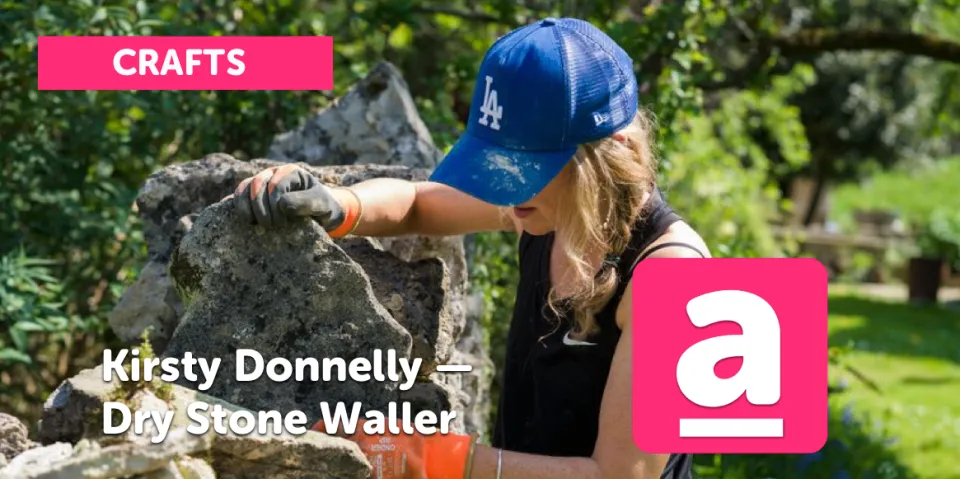
words by Alyssa Pearce | Amplify Stroud
photographs © Alexander Caminada | https://www.caminada.co.uk/
May 2025
“Stroud is a maker's paradise and always will be and there are lots of women doing amazing things creatively but it is the crafts that are seen as inherently male that I would like to see more promotion, it would be nice for it to be more commonplace, if I’ve inspired even just one of those kids from Thrupp Primary school I would be happy.”
A former freelance TV producer who worked with the BBC and This Morning among many other things, she made the move to Stroud to be closer to the countryside and worked as a manager for Damien Hirst for a year and also ran the Donnelly Sisters art agency with her sister, Katy.
Kirsty Donnelly now works as a dry stone waller in the local area, when she first moved here she wanted to work on a farm but was turned away by everyone she approached this is when her partner, also a dry stone waller asked if she wanted to help on a job he was working on.
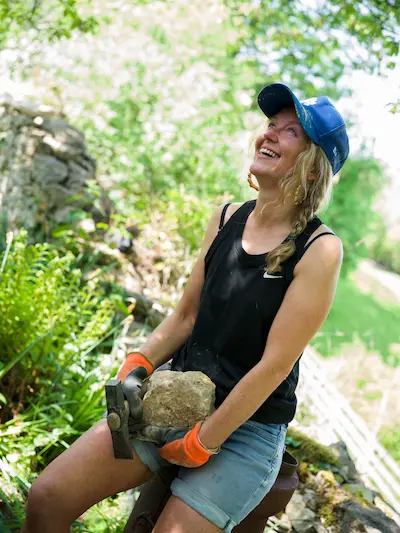
She learnt how to do the middle fill and discovered that she not only enjoyed it but was very good at it, so during COVID she helped with a wall in Foxley. She says that “Dry stone walling isn’t something you learn overnight, you can do a four day course and be proficient enough to do one in your garden but it’s something that needs practice.”
“My daughter went to Thrupp Primary School and they have a 30m dry stone wall, which the kids just pick little holes in and make little fairy houses, so I pointed it and filled it with limestone mortar, I just finished it a couple of weeks ago.
I would be in the playground and they would sit on their coats and just watch me working, one of the kids said “You’re not a builder!” but a few of the girls said to me that they would actually like to do my job.
I think it was really nice for them to see because I don’t think they see a girl with a wheelbarrow and a trowel very often and this is the age where the definition of ‘Dad working with the wheelbarrow’ is ingrained.”
“I always wanted to live on a farm but mainly I wanted to work in TV when I was younger and my parents never discouraged me from doing anything. But sometimes working in telly being a woman can have some obstacles.
I loved working in TV with some amazing people but the gender pay gap can be frustrating and it is really hard work but this has never put me off doing anything.”
“It’s a very mindful job, but I often find that the days on the stone, particularly when I’m on my own, are very therapeutic, if I’m upset or anxious I’ll sort the stones and I’ll feel better, it’s not a job to rush. As a mental health practice I believe it would be so good for kids, for teenagers, for boys and girls.”
“In the winter this job can be challenging, I get Reynaud’s and I did a wall whilst it was -4c I had heat pads and everything but there would be about an hour where I just couldn’t speak because it was so painful.
I know people who just don’t work through the winter but then if you think about it in the summer it can be just as difficult when there’s no shade and it's very dusty. In the extremes of weather this job will always be tough but overall I always prefer working outside, I’ve never finished a day and regretted it. I come back and I feel better for it mentally and physically, I think it's integral for my mental health.”
“For the environment they’re very good, dry stone walls are a breathing entity, they can house wildlife, you don’t need cement, but this could also be a disadvantage because things can grow in it and displace the stones so if you want something that is going to withstand everything you’re going to have to use concrete.
“Dry stone walls in my opinion are also more beautiful and when you take them down you can reuse the stones but with concrete you have to smash it which then just has to go in the landfill.
“There are cheaper ways to do it, dry stone is the most expensive option, but I’m not a purist so I do whatever the clients wants me to do I’ll use mortar if that’s what’s needed, I’m not going to impose what I think on these people and I think that’s a difference with women because you have to listen to what they want you to do, I want to solve the problem for them.”
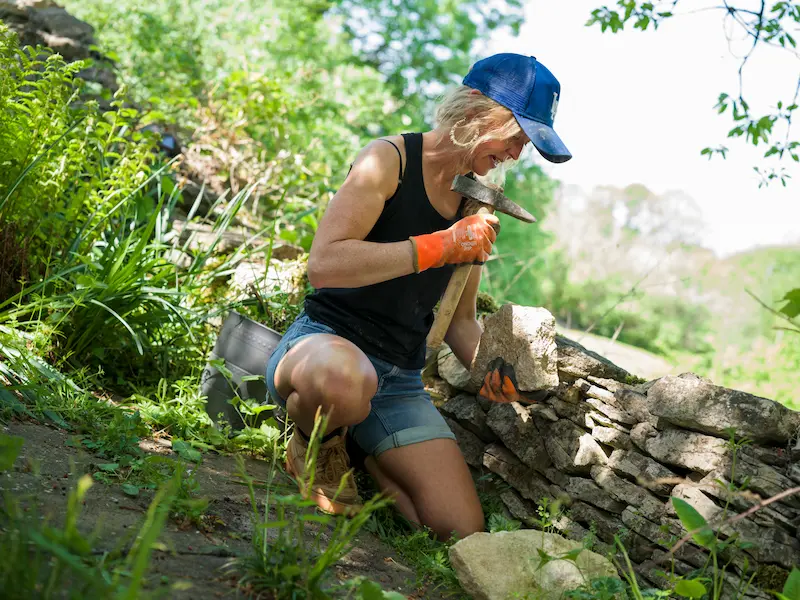
“I’m a real geek about dry stone walls, I’ll often do a day and take a picture and then come home and zoom into it to look at the stones.
“I love all the different dry stone walls in the Cotswolds, those dreamy stones for me are absolutely part of the fabric of the Cotswolds and what makes it beautiful.
In Scotland they have massive boulders in their walls so you can see right through and in Devon they put them upright with slate.
“Friends of mine send me photos of loads of different walls when they’re on holiday. I went to Ibiza and it's so hot and arid and they use a lot of gabions, I never realised that you have to place the stones in the cages, it’s not as perfect as dry stone walls but they’re not just thrown in.”
“I would love to find a way to meet all of these different people who make different dry stone walls and tell their stories.
“There are so many stories of the people who do them, the reasons they get into it, the histories, the stone and all of the treasure that you find, like the old sweet wrappers, and marbles, and pottery
I did one at a house that was an old children's home, and apparently there was a stone that they used to hide their cigarettes behind in that wall but unfortunately we never found it.”
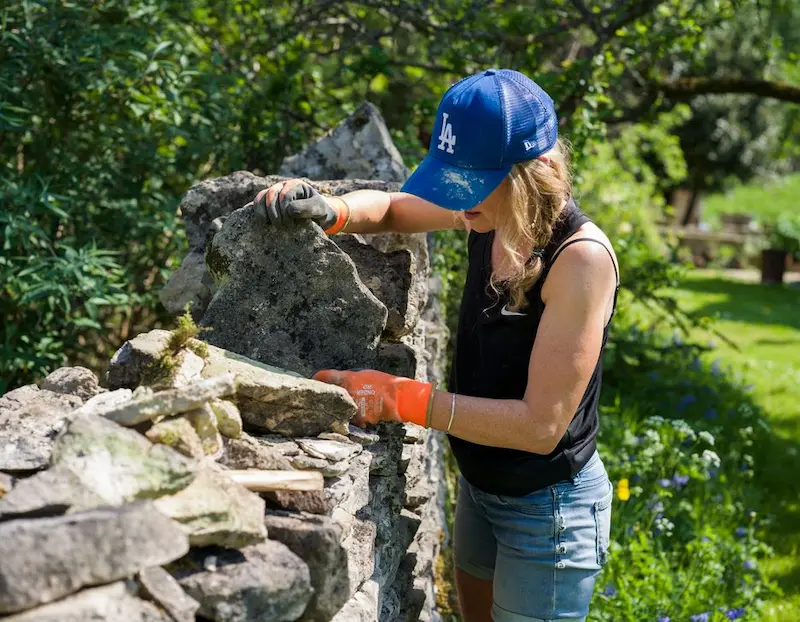
“When we take down walls we often find toads and I have no idea how they live in there. I have to find somewhere to put them, we get loads of woodlice and I try to get them all off before I put the stones down.
“I found a little lizard, lots of frogs, a snake, which I was less keen on to be honest, I lifted a huge stone and it was sat under it and I didn’t want to drop the stone and crush it but I also didn’t know what type of snake it was so I was worried it might bite me, but we moved the stone and it moved away but we could see where it went and we had to dig in that area next so I had to leave it for a day so it could get away.
“We also sometimes get wasps especially if there is a lot of ivy which also isn’t so great. But I do love all of the wildlife.”
“When I first started putting pictures of my work on Instagram I found some female dry stone wallers and some got in touch with me but these women are all hundreds of miles apart, I don’t think there is another woman doing it in Gloucestershire.
I contacted the Dry Stone Wallers Association and they don’t have any figures on how many women there are nationally. Maybe we need to promote it in a way which looks more appealing, I can’t help but feel that it needs someone to open up people's eyes to it as a profession.”
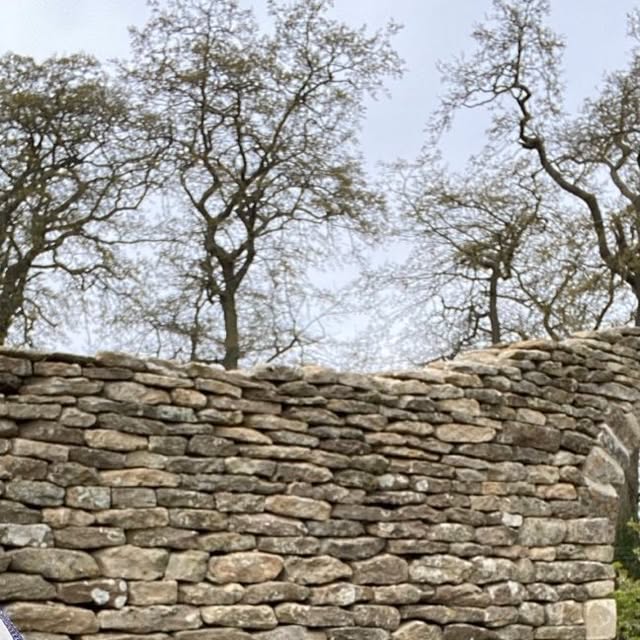
“Stroud is a maker's paradise and always will be and there are lots of women doing amazing things creatively but it is the crafts that are seen as inherently male that I would like to see more promotion, it would be nice for it to be more commonplace, if I’ve inspired even just one of those kids from Thrupp Primary school I would be happy.
“Feeling physically strong as a woman I think is really important, I don’t need someone to put my bins out, I don’t need someone to lift a box or open a jar. That culture of ‘I need a man to do that’ would be great to finally chip away at”
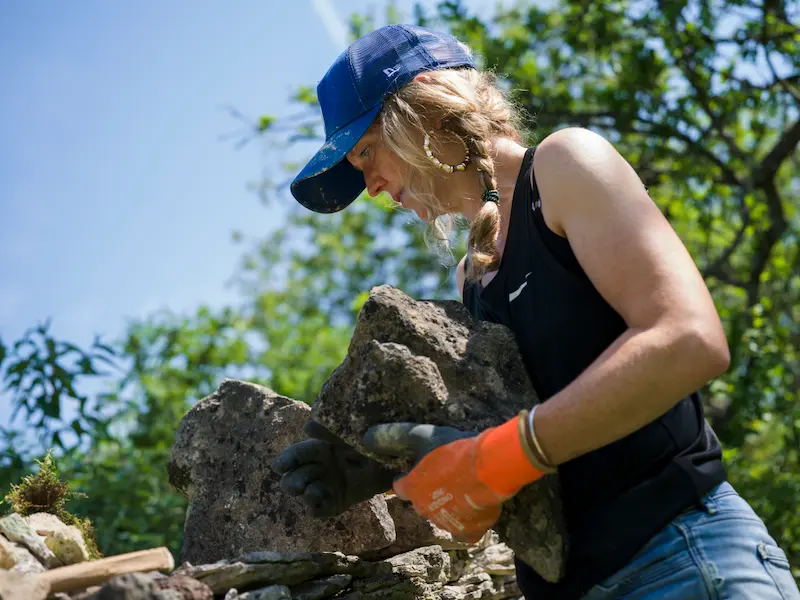
“I’m wondering what the appetite is for it at the moment, I know there are a lot of women that would like to do it.
I would love to run them in schools as well because breaking down the barriers for boys and girls whilst they are teenagers particularly at the moment where misogyny is on the rise, it would be really good to educate on what strength is, that anyone can use a hammer, to show them that it's great for your mental health and get them outside, it’s a good form of exercise.”
“I would like to get to a point where I actually wear the right gear, I still wear trainers which is really bad.
“I would just like to be really good at my job, be recognised as really good and make walls in Stroud that I can drive past in the future and say ‘that’s mine’. I would love to do something at the Chelsea flower show but also in Scotland as well.”
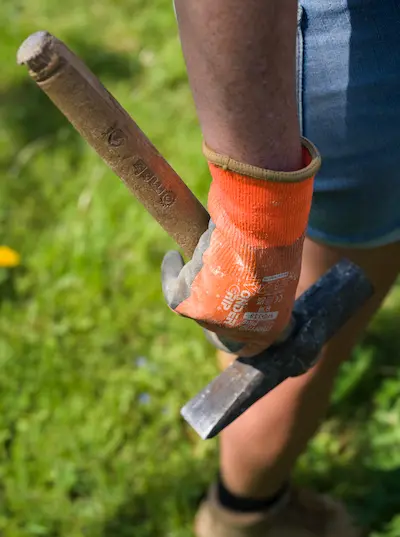
Cotswold Craftspeople
Kirsty is part of a film that is being shown at the Wilson art gallery until the end of July alongside Harold Baims 1954 film ‘ The Cotswold Craftsmen’, together they explore the similarities and the differences between craftsmanship now and then and gives insight into many different crafts people's lives.
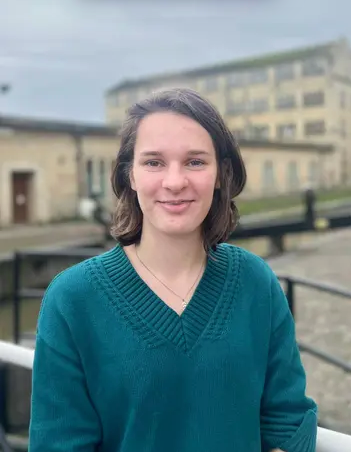
Alyssa Pearce is a young writer studying in Cirencester. Alyssa is also the Chairperson for Stroud District Youth Council.
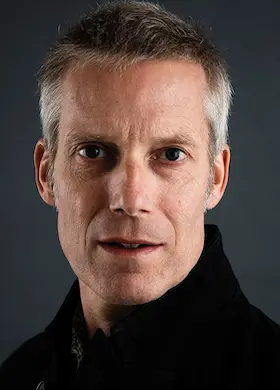
Alexander Caminada is a professional photographer working in the Cotswolds. You can see more work by Alex here:
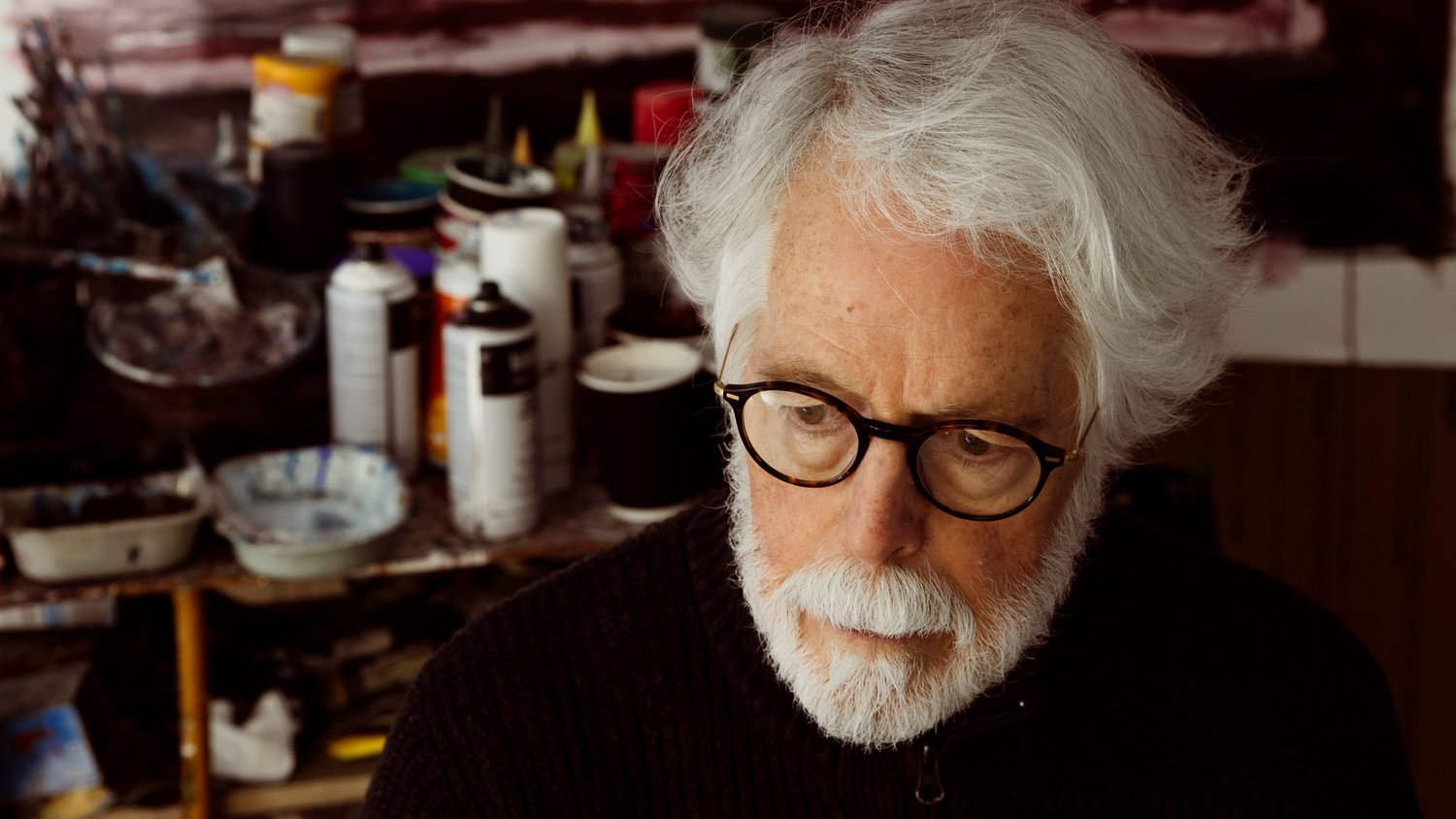

Amplify Stroud is supported by Dialect rural writers collective. Dialect offers mentorship, encouragement and self-study courses as well as publishing.
You can find out more at https://www.dialect.org.uk/




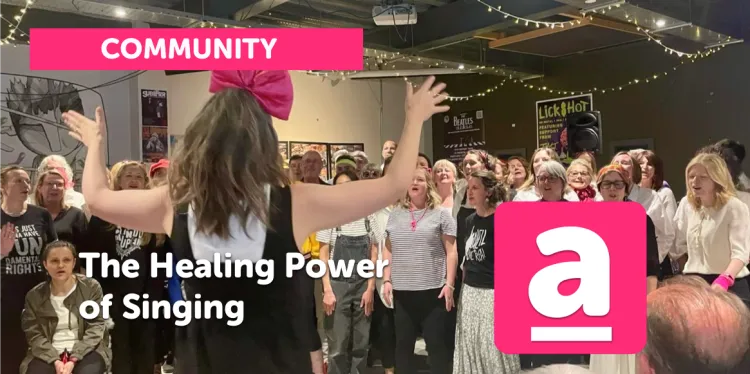
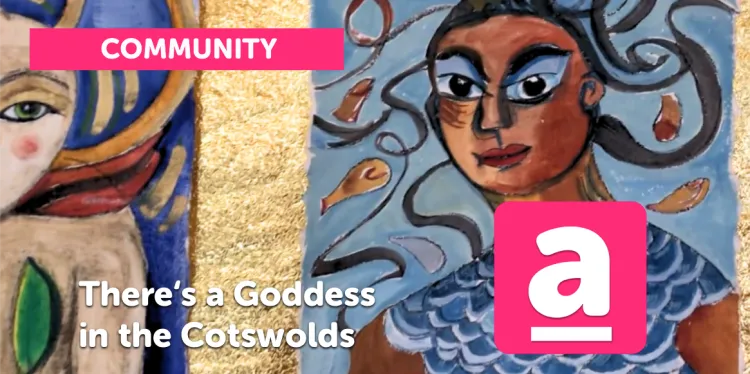
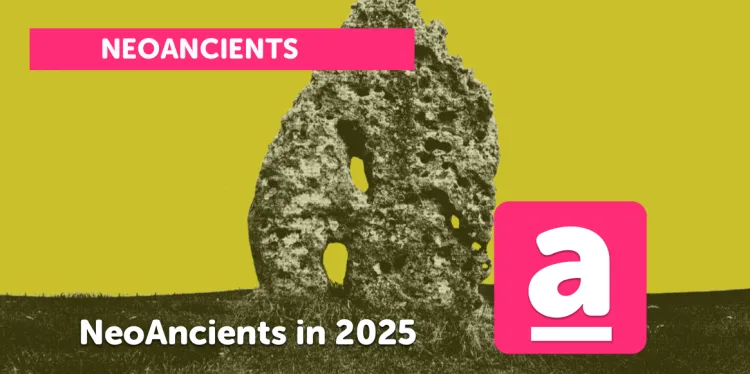
Member discussion